Releasing Your Inner Child to Let Your Artwork See No Bounds
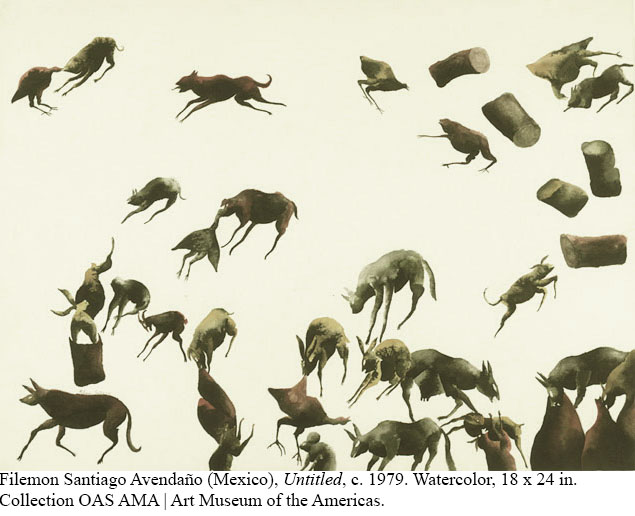 To the carefree child there is no theory of art. There is no sense of complementary colors, no difference between six types of drawing pencils, no trivial question, “Is my darkest dark too dark, my lightest value too light?” There is simply a pencil for drawing, along with pastels and paints that come in every color imaginable by the young mind. While working with the College Park Community Center’s After School Program, with children aged six to twelve, I kept this idea in mind as we worked ever so carefully to complete artworks during two one-hour sessions. Together, we developed reimagined versions of Filemón Santiago Avendaño’s painting, Untitled, and then employed digital technology to create a stop animation of their pieces. The idea of creating a time-based artwork came easily; as I looked at Santiago’s piece I envisioned the creatures floating and moving in space.
To the carefree child there is no theory of art. There is no sense of complementary colors, no difference between six types of drawing pencils, no trivial question, “Is my darkest dark too dark, my lightest value too light?” There is simply a pencil for drawing, along with pastels and paints that come in every color imaginable by the young mind. While working with the College Park Community Center’s After School Program, with children aged six to twelve, I kept this idea in mind as we worked ever so carefully to complete artworks during two one-hour sessions. Together, we developed reimagined versions of Filemón Santiago Avendaño’s painting, Untitled, and then employed digital technology to create a stop animation of their pieces. The idea of creating a time-based artwork came easily; as I looked at Santiago’s piece I envisioned the creatures floating and moving in space.
While using Santiago’s watercolor Untitled as inspiration, the children acknowledged the fact that, yes, Santiago did mainly use the same color scheme throughout his composition. But taking for themselves that same creative freedom, they used colors of their own choice. A rainbow of oil pastels smudged their faces and hands as they beamed at their artworks and quietly chatted amongst themselves about what type of hybrid animal they were creating. Aquatic animals were fused with four-legged land animals, soaring creatures with ones who scurried with eight legs. These hybrid animals exemplified the already complex interworkings of their young minds.
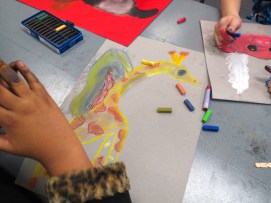
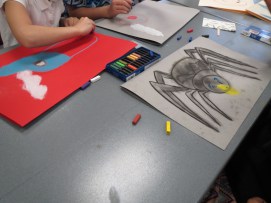
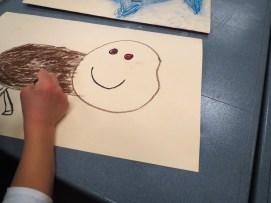

Inventive ideas were also apparent in the production of the stop motion animation in our second session. The children made note that the background—a 6×9 piece of canvas—was blank and limitless, not having a foreground, middle ground, or background. They would not have to confine their ideas to any particular space. This allowed for discussion to be constant throughout the creation of the animation: as one child mentioned his or her next move, the rest of the group members began to plan their moves accordingly.
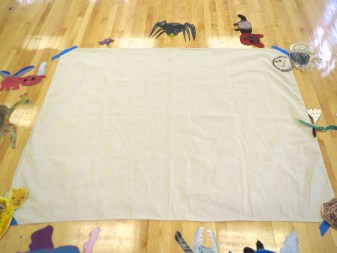
Overall, I was surprised at how much the children enjoyed the stop motion animation process and how involved they stayed throughout the forty minutes allotted for picture taking. The composite piece they created is not a mirror image of Santiago’s Untitled, but it reflects a vibrancy that can only be produced by the boundless imagination of a child. The animation will be on view at The Art Gallery on Maryland Day
Credit: Lindsay D’Andelet, junior, University of Maryland
